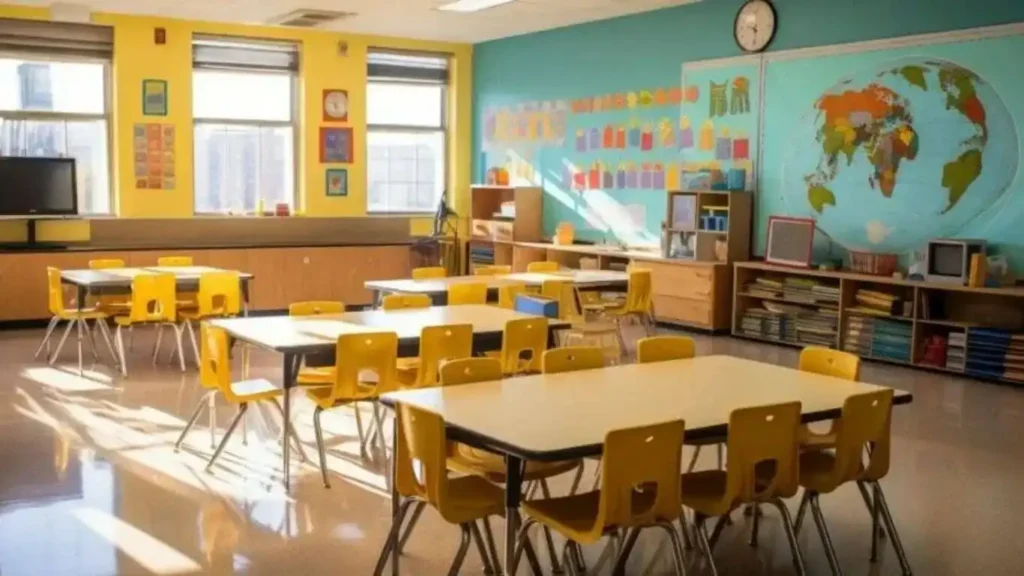Introduction: Learning Is Changing—Are We Ready?
In many schools today, classrooms still look like they did decades ago—desks in rows, a teacher at the front, and students passively taking notes. But the world around us has changed. Students now grow up with smartphones, streaming videos, and instant access to information. This gap between the modern world and old teaching methods causes students to lose focus, feel disengaged, and fall behind.
That’s why Classroom 20x is so important. It’s not just a fancier version of what we had—it’s a complete transformation of how we teach and learn. Blending personalized education, active learning, smart tools, and flexible spaces, Classroom 20x turns schools into engaging environments where every student can thrive. Let’s explore how it works and why it’s shaping the future of education.
What Is Classroom 20x and Why It Matters
A Shift from Passive to Active Learning
Instead of sitting quietly during lectures, students now get involved. Classroom 20x encourages hands-on activities, discussions, and problem-solving. For example, a 5th-grade science class might build a model ecosystem instead of just reading about it. This keeps students engaged and helps them understand concepts more deeply.
Real-Time Feedback and Engagement
Smart learning tools like Kahoot! quizzes or AI-powered learning apps help teachers see what students know right now. This means lessons can change on the fly. If most students struggle with a topic, teachers can reteach it immediately, closing gaps before they grow.
Personalized Learning Paths
Each student learns differently. With Classroom 20x, technology like adaptive learning software (e.g., IXL or DreamBox) adjusts content based on a student’s level and pace. This makes personalized education a reality, helping struggling students catch up and advanced learners move ahead.
The Role of Technology in Classroom 20x
Smart Tools That Power Learning
Modern classrooms use tools like:
-
Tablets and laptops for digital learning
-
AI tutors (like Khanmigo by Khan Academy) that offer 1-on-1 help
-
Learning Management Systems (LMS) like Google Classroom for assignments and feedback
These tools reduce paperwork, save time, and boost student participation.
Virtual Reality and Augmented Learning
Imagine a history lesson where students walk through ancient Rome using a VR headset. Or a biology class where they examine 3D models of the human heart. Tools like Merge Cube or Google Expeditions bring abstract concepts to life, making learning fun and unforgettable.
Cloud-Based Collaboration
With platforms like Google Workspace for Education, students can co-edit presentations, brainstorm in shared docs, and work on group projects—even remotely. This builds collaboration skills while teaching students how to use modern productivity tools.
Designing Flexible and Creative Learning Spaces
Say Goodbye to Rows of Desks
Classroom 20x breaks the traditional setup. Schools now create:
-
Reading nooks with soft seating
-
Moveable desks for flexible layouts
-
Writable walls for brainstorming sessions
This setup supports different learning styles and keeps students comfortable.
Zones for Focus and Collaboration
Teachers design “learning zones” such as:
-
Solo corners for independent work
-
Team stations with shared resources
-
Creation zones for art, robotics, or maker activities
These areas help students choose how and where they learn best.
Outdoor and Nature-Based Learning
Schools like Green School Bali and UWC Thailand take students outside to learn. Garden spaces become science labs. Nature walks inspire poetry. Outdoor classrooms support creativity, mental well-being, and active learning—core parts of Classroom 20x.
Supporting Teachers in the 20x Revolution
Professional Development That Works
Teachers are key to this change. Schools offer:
-
Workshops on digital tools and active learning
-
Peer coaching for hands-on support
-
Paid time to plan, test, and reflect
For example, the Dallas ISD launched a “Tech Coach” program that helped hundreds of teachers adopt new strategies within months.
Smarter Workflows for Less Stress
Time-saving tools reduce burnout:
-
Grading automation via LMS
-
Classroom management apps like ClassDojo
-
AI lesson planners that suggest age-appropriate content
Less time on admin = more time with students.
Collaboration and Shared Success
Teachers work as teams. Shared lesson banks, cross-grade collaboration, and online communities like Teachers Pay Teachers encourage innovation and reduce isolation. Everyone grows—together.
Measuring the Impact of Classroom 20x
Better Academic Results
Studies by EdTech Evidence Exchange show that schools adopting Classroom 20x strategies see:
-
Up to 25% gains in test scores
-
Improved classroom attendance
-
Higher student satisfaction levels
Learning outcomes improve when students are engaged and supported.
Emotional and Social Growth
Besides academics, Classroom 20x helps students grow emotionally:
-
Teamwork in projects builds empathy
-
Choice-based learning grows self-confidence
-
Role-playing or debates build communication skills
Soft skills prepare students for life beyond school.
Ongoing Feedback Loops
Analytics dashboards, regular student surveys, and teacher reflections help schools adjust in real-time. If something isn’t working, it’s fixed quickly. Continuous improvement is a core value of the 20x model.
Conclusion: Why Classroom 20x Is the Future of Learning
Classroom 20x isn’t just about new tools—it’s about giving students what they really need to succeed in today’s world: flexibility, technology, creativity, and personal support. It’s a model that puts learning first and brings both excitement and purpose back into the classroom.
Whether you’re a teacher ready to innovate, a school leader looking to upgrade, or a parent seeking better education for your child, now is the time to take action. Download our free “Start with 20x” guide or join our educator newsletter today—because the classroom of the future starts with you.



